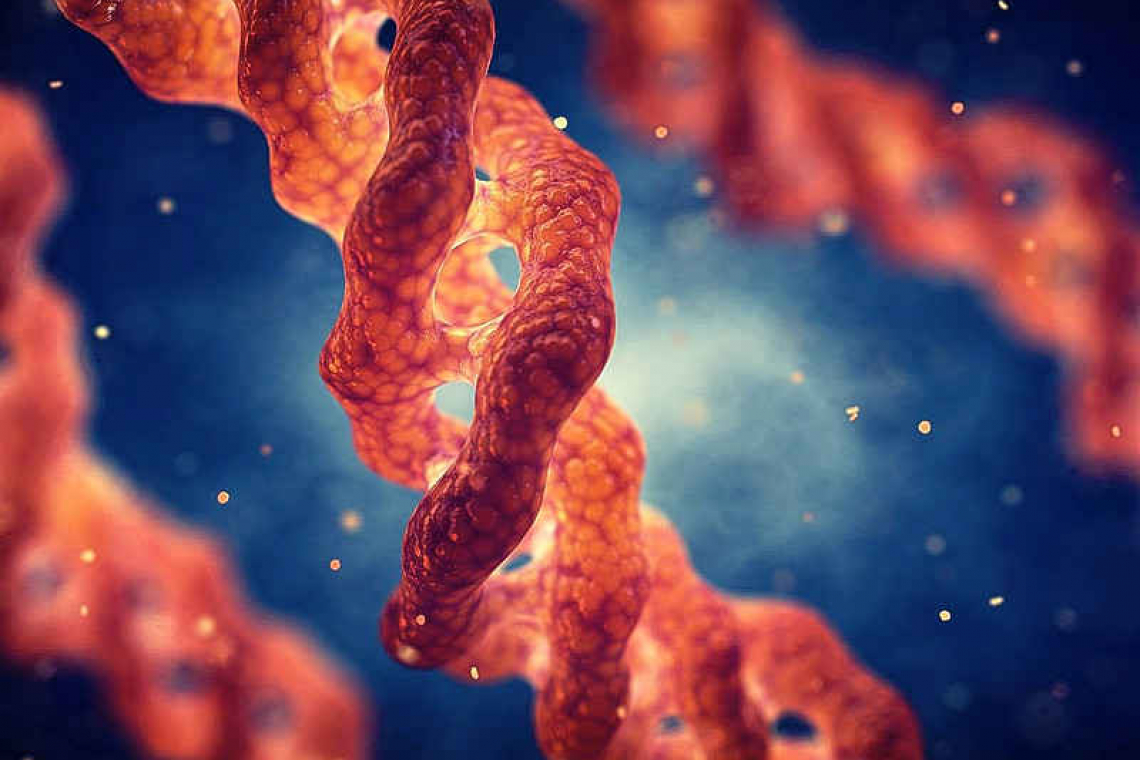By Colin Michie FRCPCH FRSPH FLS RNutr FRSA
About a third of the protein in our bodies is collagen. Connective tissues in mammals, birds, fishes and sponges are collagen. It forms structural nets and glues, sculpting bones, cartilages, tendons, skin, blood vessels, eyeballs and inner organs. Many types of collagen link together to accomplish this in humans. For instance types 1 and 3 are common in the lower layers of skin and gut, types 2, 9 and 11 in joint cartilage, type 4 in blood vessel linings, type 5 in the cornea, types 1, 2 and 3 in the tympanic membrane, type 11 in the fluids that fill the eyeball, inner ear and in the discs between our vertebrae.
Collaborations between these amazing helical molecules, twisted into tough fibres, contribute to the strength and resilience of scaffolds and membranes between our cells. Collagen keeps kidneys, testicles and ovaries in shape. In the heart collagen defines the chambers, the valvular rings. It directs the spread of the electrical impulses from the pacemaker to the pumping chambers and the twisting movements of those chambers are orchestrated by a collagen ‘skeleton’.
Flesh wounds from that childhood fall, your acne, chickenpox, the burn in the kitchen or even surgery all heal and seal using collagen fibres, knitting together softer tissues in scars. Collagen structures develop in response to damage, as in fibrosis in lungs damaged by smoking or dusts, or cirrhosis in an inflamed liver. Collagen is an architect of dynamic youthful health as well as restricted old age.
We make collagen more rapidly when we are younger, when we have a great deal of it in our skin. With age, collagen is made less rapidly in many parts of the body. We lose it steadily from our skins, as we can all see when we ask an older relative to grin or gurn. Varicose veins, hernias, loose teeth and thinning skin are gravestones to youthful collagens. The aorta, carrying blood from the heart, often becomes stiffer as its elastic fibres are replaced by collagen, with damaging results to our blood vessel beds.
We know little of how collagen production and breakdown are controlled in the body. These tough proteins are dynamic: they are steadily remodelled. Vitamin C or ascorbate is needed for the manufacture and meshing of collagen fibres. Long-term deficiency of vitamin C causes scurvy, with painful bleeding into the skin, joints and gums. Collagen production can be influenced in animals by feeding them extra collagen. This neutraceutical approach could be particularly helpful if it might help repair tendons damaged in sport, or perhaps arthritic symptoms in the elderly. However so far careful human trials have not demonstrated consistent and significant benefits. This is a challenging field with enormous potential.
As a tough biological product that can be sterilised and tailored, collagen is increasingly used by surgical teams in tissue engineering. It seldom causes allergies or immunological rejection. A collagen patch prepared from fish scales may be applied to the head of the humerus, for instance, encouraging tendon regrowth to repair the rotator cuff. Knitted into a tube, collagen may be used as a scaffold to replace a blood vessel or windpipe. Combining collagen scaffolds with growth factor coatings, or possibly stem cells from a patient, allows the development of transplantable, personalised tissues. This might permit improved repairs to infants damaged by congenital disorders, or to tissues damaged in trauma.
Sheets of collagen make excellent wound dressings for burns or chronic leg ulcers. This approach adds value by preventing the development of antibiotic-resistant bacteria. Shorter collagen molecules promote healing too in these situations. This capacity is being tested in conditions such as mouth ulcers. Membranes or sponges made of collagen have been implanted into the body to slowly release medications to good effect. A collagen thread has been tested for delicate facial surgery, where good wound healing with little inflammation or scarring was found. Collagen may be printed on three dimensional systems for tissue cultures, such as a pancreas on a chip.
Traditional cuisines include broths containing bone. Caribbean oxtail recipes, as oil-downs or soup contain bones. French chefs often include a veal bone for grand sauce Espagnole - a reduced brown stock. Vietnamese pho soup is based on bones. All are rich in minerals, some vitamins and amino acids including glutamine, that provides their umami flavour. Boiled collagen produces gelatine, a hydrogel widely used by canny cooks in desserts. Where would we be without those cultural icons of blancmanges, marshmallows and jelly babies?! Or isinglass (collagen from fish bladders) used in the wine and beer industries?
Collagen is unlikely to help currently with our quests for eternal youth, but it is a marvel whose applications will continue to develop.







